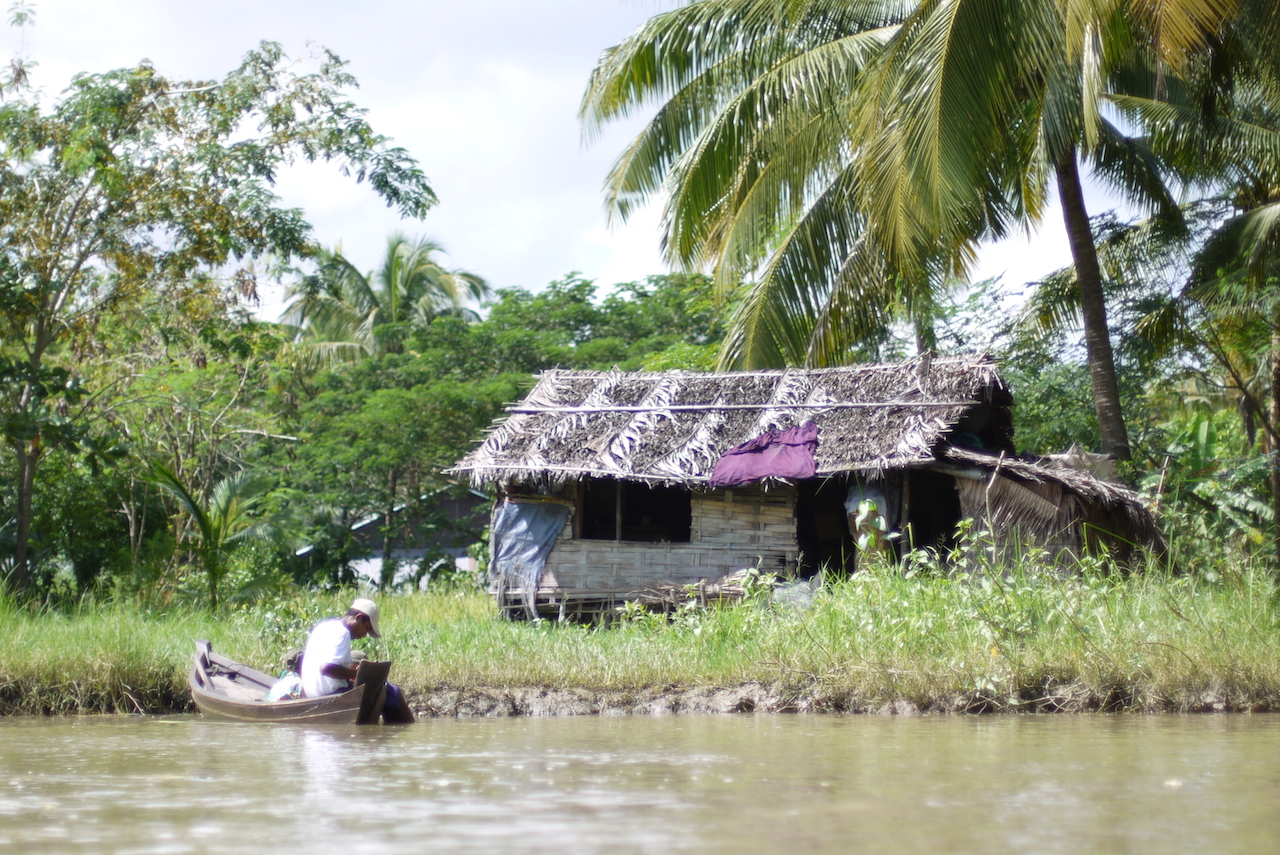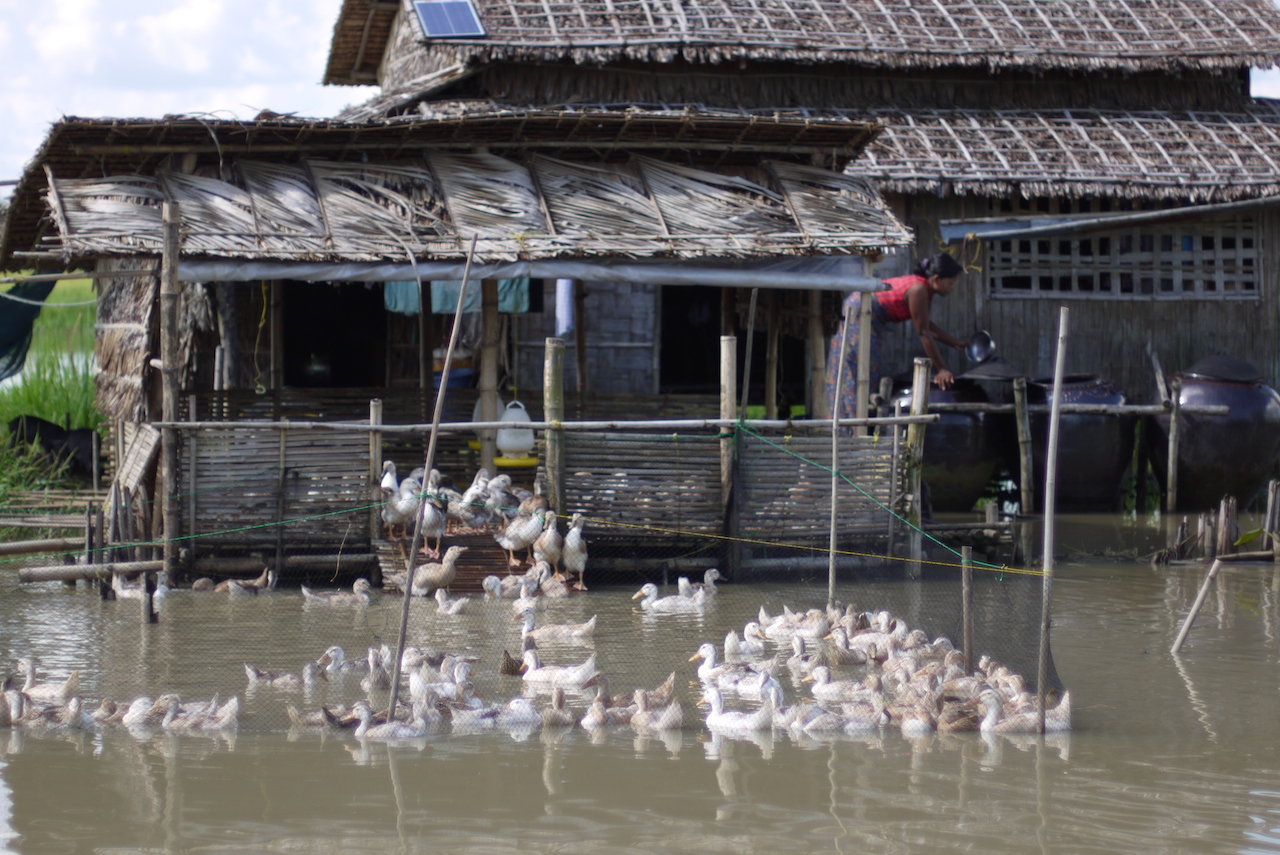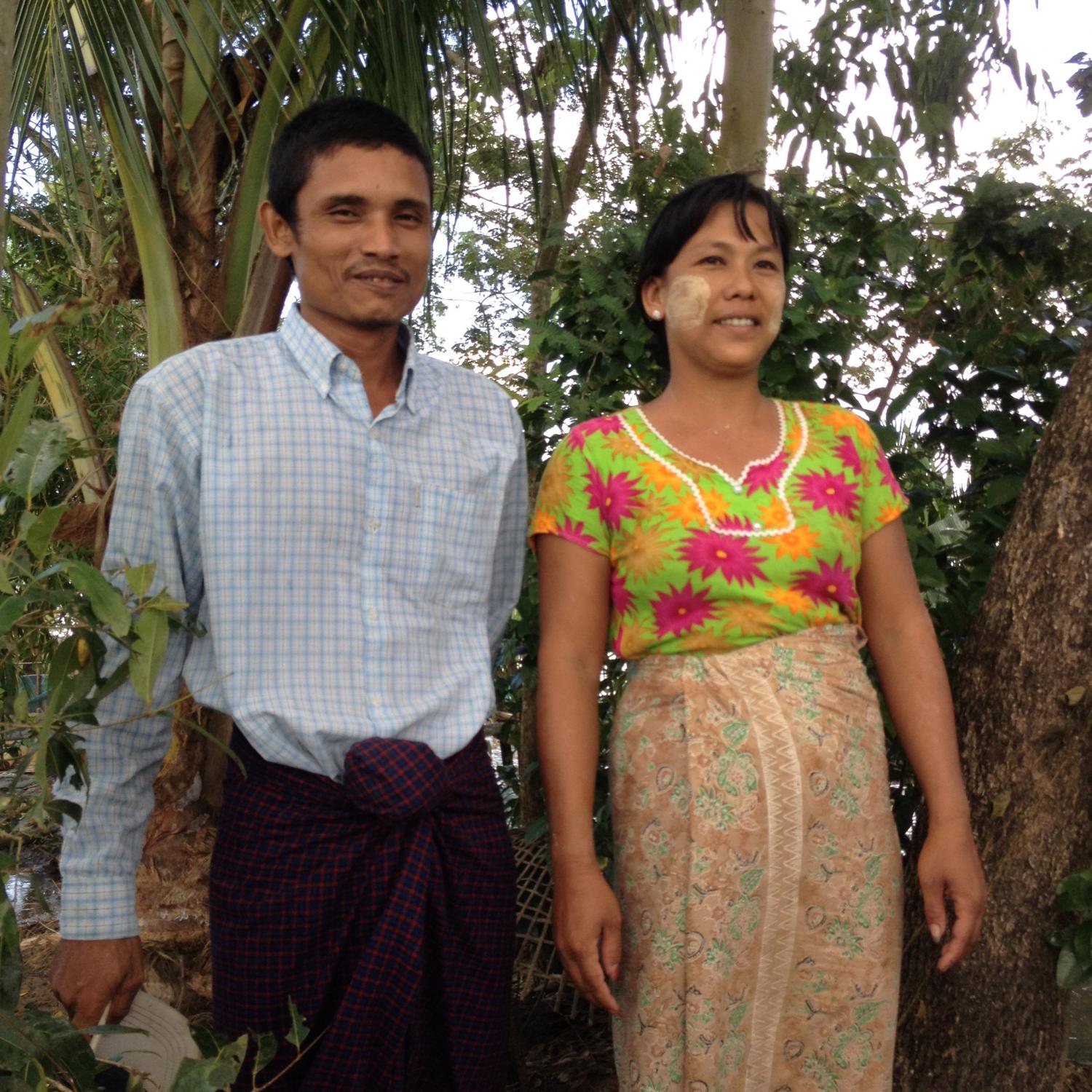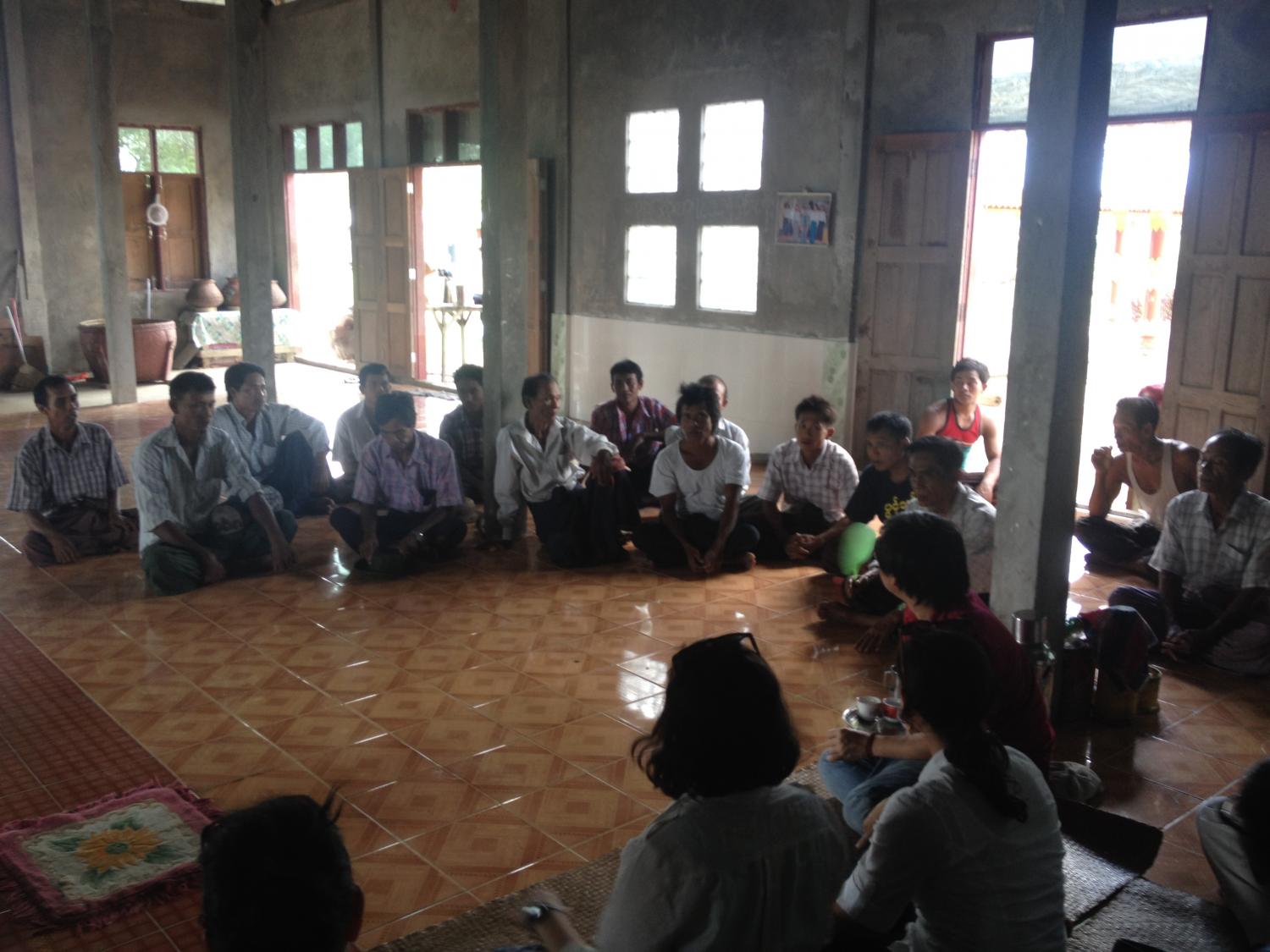Microfinance at Work in the Delta Region of Myanmar
November 24, 2014
After two months of my fellowship at the Proximity Design, now it’s time to find out how microfinance is used in practice. I went together with the Kiva HQ staff to visit Tha Pyay Kan village in Pyapon Distric which is about 75 miles south of Yangon and serves as a center for collecting rice from the surrounding agricultural areas. It took us three hours by car and another hour by boat to reach the village.
This is the first time I am in Myanmar and also the first time I travel to the delta region. Along the way I was wondering how the life of the people after the Cyclone Nargis has changed. In 2008 the cyclone Nargis killed over 138,000 lives in Myanmar and destroyed the entire infrastructure of the Ayeyarwady Delta region. The cyclone caused a huge damage in the area and had severe affects to this important agriculture region. Therefore I was looking forward to witness myself how the live of the local people went on after Nargis hit the region. Furthermore, I was excited to learn on first hand about the people’s culture in the Ayeyarwady division.
 Almost every house has a roof thatching. I do not want to imagine how it looks like when a storm or cyclone comes.
Almost every house has a roof thatching. I do not want to imagine how it looks like when a storm or cyclone comes.
 Several people of the region have a duck farm as second income beside their rice farming.
Several people of the region have a duck farm as second income beside their rice farming.
Duck farms are always next to the house. The owner uses nets to prevent the ducks from escaping.
 This is one of the owner of the duck farms.
This is one of the owner of the duck farms.
When we arrived at the community monastery the farmers were waiting for us. There were around 20 people who came for the meeting. We gathered in a circle with men and women separated. On the left side of the room were only men and on the right side were only women and kids. We started the meeting by telling them that we were here to learn more about their life and how the loan is helping them. Additionally, we discussed their challenges and what they need in terms of support. We were told that they'd like to have a larger loan size, a lower interest rate and a longer loan term. We would discuss about this with Proximity, so they can take this into account in order to plan for the new coming loan.
 The Proximity Finance borrowers from Tha Pyay Kan village
The Proximity Finance borrowers from Tha Pyay Kan village
As Proximity Design started a Kiva loan in Central Myanmar, they do not have a Kiva loan in the delta region yet. They are planning to have it early in 2015. So you might see some of the duck farmers profiles up on the Kiva website soon! In the meantime, let’s check the Kiva site and fund the loans to support small and low income farmers.
PREVIOUS ARTICLE
Links we like: Amazing photos, jamming tunes and an internet win →NEXT ARTICLE
Shop Small, Invest Big →













